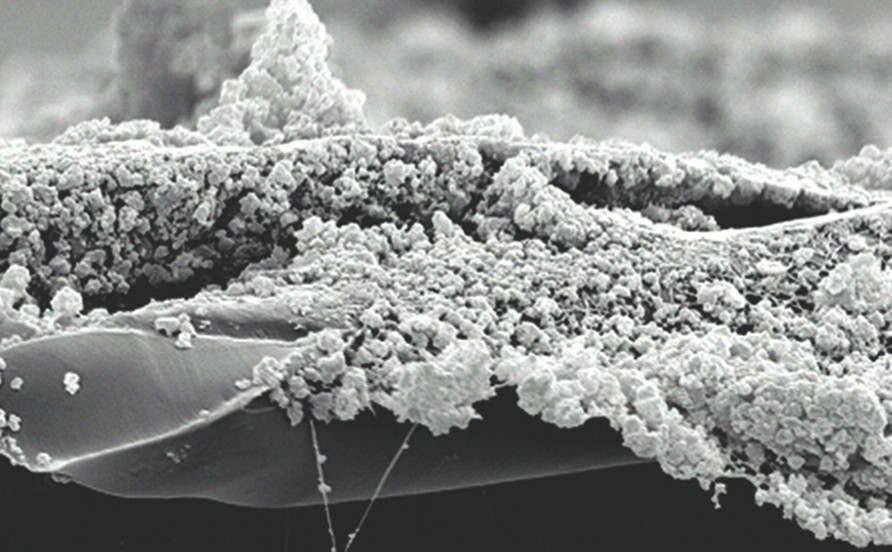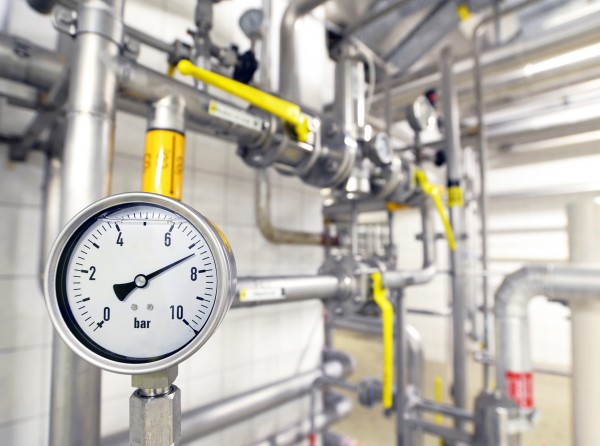How a Textile Plant Benefited from Upgrading Filters
Air compressors serve vital roles in manufacturing facilities, driving various machinery and performing countless other functions. The dustier the plant environment, the more taxed are the air filters that clean intake air for the compressor. Traditional cellulose filters can clog quickly, while newer filter technologies from Donaldson can quickly reap a return on investment.
One instance of this occurred at a dusty textile plant in China. The downtime of air compressors in the plant was greatly reduced when conventional air filters were replaced with high-efficiency filters employing Donaldson’s proprietary fine-fiber technology. The Donaldson filters extended the service interval for the air filters at this plant by a factor of five, significantly reducing their maintenance costs and improving system reliability for the plant owner.
A Challenging Environment
The textile plant in Shandong Province, China relies on approximately 600 compressors to drive various machinery and operations. With a variety of fibers and other particulate matter in the air, the compressor air filters were becoming clogged and triggering restricted-airflow alarms after less than 200 hours of service, in some cases only 50 hours. Workers attempted to clean the filters by reversing air flows, but had limited success, sometimes only adding another 100 hours of service life to the filter. In addition, cleaning the filters with highpressure air was not a practical solution. Using high-pressure air to remove dirt from an air filter inevitably damages the delicate filter media, leading to small tears that allow more and larger particles to pass through.
To improve the situation, the air compressor vendor discussed with Donaldson the possibility of replacing the cellulose air filters with surface-loading fine-fiber filters employing Donaldson’s Ultra-Web® technology. Whereas traditional cellulose filters provide efficiencies of approximately 99 percent, the fine-fiber technology can provide efficiencies of 99.99 percent.
How the Technology Works
Inlet air filter media have traditionally been made from cellulose fibers or a cellulose-synthetic blend. Donaldson’s Ultra-Web technology uses a fine-fiber media made with an electrospinning process that produces a fine, continuous, resilient synthetic fiber ranging from 0.2 to 0.3 microns in diameter. Ultra-Web technology provides high efficiency by establishing fine inter-fiber spaces that trap dust on the surface of the media, as shown in Figures 1 and 2. Dust trapped at the surface of the media forms a “dust cake” which remains permeable to air, meaning restriction across the filter will rise more slowly compared to a cellulose depth-loading media, where dust gets trapped deep in the media and can block air flow passages.
 Figure 1: Ultra-Web technology forms a fine fiber web that traps dust on the surface of the media.
Figure 1: Ultra-Web technology forms a fine fiber web that traps dust on the surface of the media.
 Figure 2: Dust on the surface of a fine fiber filter.
Figure 2: Dust on the surface of a fine fiber filter.
Trying the Alternative
To determine the effect of high-efficiency filters, workers installed the fine-fiber filters on five compressors that had previously used a traditional cellulose media. The filter assemblies were changed from the original, vertically mounted assemblies to new Donaldson assemblies, which housed the Ultra-Web filters in a horizontal configuration. Workers monitored operations, comparing the times when airflow restriction alarms were triggered on both types of filters. The results were remarkable.

As shown in Figure 3, the Ultra-Web filters increased the average time when alarms were triggered from approximately 300 hours to over 1,500 hours, a five-fold increase. Figure 3 shows the number of running hours to reach a certain level of pressure drop. Surface loading contributes to the slower rise in restriction and thus a long life for the filters.
The high efficiency of the filters was also evident in visual inspections. As shown in Figure 4, a significant amount of dust and other particulate matter was captured on the exterior of the filter at the end of the test period, while the interior showed significantly less dust, such that it appeared almost as clean as a new filter.


Post-Test Actions at this Plant
Following the test, the textile plant operator replaced all air cleaners on their 600 machines with Donaldson Ultra-Web filters, saving more than $1 million USD per year in operating costs. The filter replacement also resulted in annual labor savings of more than 7,000 person-hours. This is equivalent to approximately 3.5 full-time employees.
Other Considerations
The Chinese textile plant provides a prime example of how improved air filtration can have a significant impact on overall system efficiency. The air filter must be viewed as an important part of a filtration “ecosystem”, which also includes an oil filter and an air-oil separator, as shown in Figure 5. Improved performance in one filtration component directly impacts the performance of other filtration components.

The impacts filtration components have on one another can be seen by considering the effect air filters have on air-oil separator life. High-quality air filters produce a slower rise in restriction across air-oil separators, supporting long life of the air-oil separator and decreasing pressure drop across the component. Pressure drop robs compressors of efficiency; in other words, the same amount of electricity produces less compressed-air energy when pressure drops are introduced. An added pressure drop of only 1 psi essentially reduces compressor output by approximately 0.5 percent.
While individual site results may vary depending on the contaminant present, the current filters used, and other such variables, most plants that currently use low-efficiency air filters like traditional cellulose filters, can see the benefit of selecting a high-performing, high-efficiency filter. In addition to textile plants, other industries that could benefit from high quality filtration include concrete plants, wood processing plants, and virtually any other facility where dust and particulates are present. A key point to remember is that a system is only as good as its weakest link, and the entire ecosystem should be considered when selecting filtration equipment. The Donaldson team can help you find ecosystem-based solutions for your unique system requirements.
You May Like...




